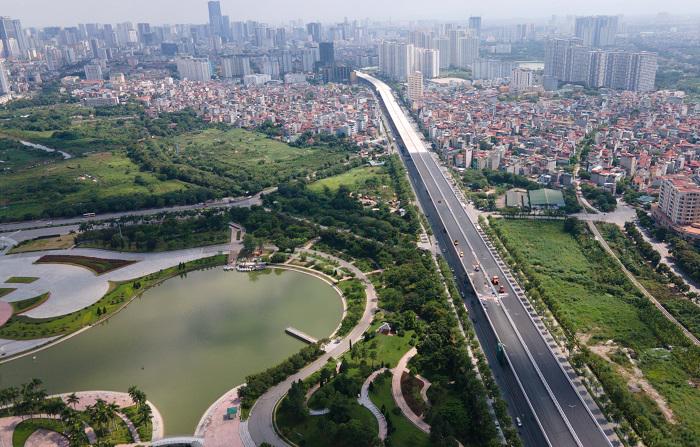Circular economy helps Vietnam reduce GHG emissions per GDP by 15% in 2030
The Vietnamese Government considers circular economic models essential in improving people’s living standards and their resilience against climate change
The Vietnamese Government considers a circular economy a key solution for the country to reduce greenhouse gas emissions per GDP by at least 15% by 2030 against 2014, and eventually realize the net-zero carbon emission target by 2050.
| Hanoi from above. Photo: Pham Hung |
The goal was set in the Government’s plan for circular economy development in Vietnam, which was recently signed off by Deputy Prime Minister Le Minh Khai.
“Circular economic models are essential in improving people’s living standards and their resilience against climate change,” noted the plan, expecting a fair opportunity for everyone in gaining benefits from a circular economy.
In the coming time, the Government would continue to raise awareness among businesses and investors from Vietnam and abroad about the circular economic model, while promoting the application of circular economy among different sectors toward green and sustainable growth.
By 2025, the Government expects circular economic projects to start having positive impacts on the economy, society, technologies, and environment, contributing to the restoration of renewable resources, reducing energy consumption, and enlarging the proportion of renewables to the total energy provision.
Vietnam also targets to recycle and reuse up to 85% of plastic waste; reduce 50% of plastic waste in the oceans and seas compared to the previous periods; gradually phase out the use of nylon bags and single-use plastic products.
The Government aims to enhance the capabilities of recycling organic waste in the urban and rural areas and raise public awareness of the consumption of using plastic products.
By 2030, the rate of solid waste collected and treated under the circular economic models would reach 50%; 100% of organic waste in urban areas and 70% in rural areas would be recycled; wastewater in urban areas would be treated to the maximum under national standards.
The plan encourages Government agencies to actively seek support from international donors and organizations to access new technologies, knowledge, and resources for the development of the circular economy.
| In a circular economy, production and consumption encompass sharing, leasing, reusing, repairing, refurbishing, and recycling materials and products as long as possible, extending product life cycles, and keeping materials within the economy wherever possible. |
As part of the Hanoi’s efforts to achieve a GRDP growth rate of 7-7.5% for the 2021-2025 period, the Hanoi People’s Committee has set the long-term goal of restructuring the local economy in line with revising the growth model, which would be based on digitalization, development of a digital economy, energy transition to green growth, and a circular economy. |












